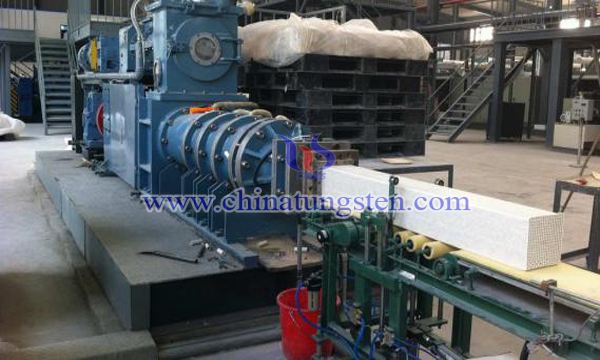SCR Waste Catalyst Recycling
- Details
- Category: Tungsten Information
- Published on Monday, 02 July 2018 16:29
China is a big country in energy production and consumption. Coal is the main source of energy supply. Coal-fired power generation mainly through direct combustion, coal combustion produced a large number of smoke, nitrogen oxides (NOx), sulfur oxide (SOx), mercury and other heavy metal oxides and a large number of carbon dioxide gas.

Selective Cata-lytic Reduction, SCR has become the most widely used flue gas denitrification technology in the world with its advantages of simple device and high efficiency (up to 90%), reliable operation and easy maintenance.
Catalyst is the core part of SCR technology. At present, SCR commercial catalyst is based on TiO2 as the base material, V2O5 as the main active component, and tungsten trioxide as an antioxidant and antitoxic auxiliary component. In the process of SCR denitration, the activity of the catalyst is the comprehensive ability of the catalyst to catalyze the chemical reaction of NH3 and NOx.
The life of denitrification catalyst is infinite in theory, but in the actual operation of the SCR device, many reasons may lead to the reduction of catalyst activity and shorten the life span. At the same time, because of the economic and market reasons, the life of the catalyst is becoming shorter and shorter, so a large number of denitrification waste catalysts have been produced. Due to the need of catalytic reaction, some of the toxic components, such as As2O3, As2O5 and CrO3, have to be used or added in the preparation process, which often exist in the waste catalyst. In the process of using the catalyst, some harmful substances such as arsenic, sulfur, chlorine and carbonyl nickel, such as arsenic, sulfur, chlorine and carbonyl nickel, are also adsorbed. These harmful substances will also cause pollution to the surrounding environment. Therefore, it is necessary to recover the waste catalyst.
The general steps of recovery and utilization of SCR waste catalyst are divided into pretreatment of waste catalyst and separation of active component from carrier. The pretreatment of waste catalyst generally adopts the process of drying, roasting, degreasing, desulphurization and oxidation reduction. The purpose is to remove other harmful impurities, such as water, organic matter, sulfur and other harmful impurities adsorbed by waste catalyst, and change the internal structure and external shape of the waste catalyst, so as to meet the requirements of the post process, the specific contents are as follows:
The waste vanadium tungsten catalyst SCR was pretreated to obtain titanium slag and vanadium tungsten solution. The vanadium rich tungsten solution and tungsten rich organic phase were obtained by extraction and separation of vanadium tungsten solution. Five vanadium oxide two vanadium products were obtained by reprocessing vanadium rich residual solution. The tungsten rich organic phase obtained by extraction was extracted by reverse extraction, and the stripping solution and blank organic phase were obtained. The stripping solution was extracted by two stages to obtain tungsten rich two phase organic phase and residual liquid. The tungsten rich two phase organic phase was then stripped back to obtain ammonium tungstate solution and blank organic phase. Ammonium tungstate was reprocessed by ammonium tungstate solution.
By recycling, the waste catalyst and heavy metal waste water can be eliminated. There is no pollution. The process is simple, the extractant can be recycled, the consumption of the agent is low, the purity of the product is high, it is suitable for the large-scale popularization of the industry.
- Tungsten Manufacturer & Supplier, Chinatungsten Online: www.chinatungsten.com
- Tungsten News & Prices of China Tungsten Industry Association: www.ctia.com.cn
- Molybdenum News & Price: news.molybdenum.com.cn
- Tel.: 86 592 5129696; Fax: 86 592 5129797; Email: sales@chinatungsten.com



 sales@chinatungsten.com
sales@chinatungsten.com